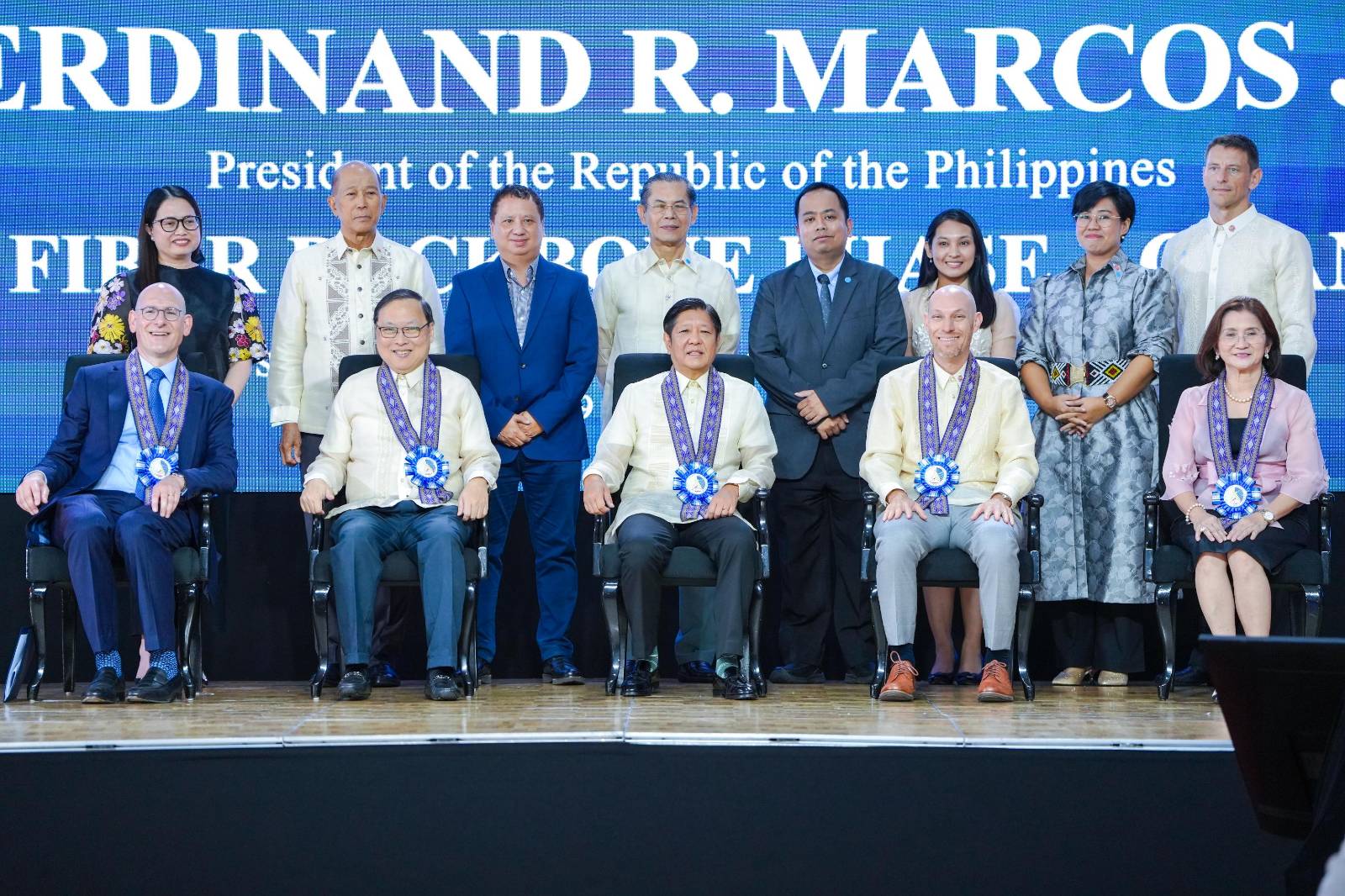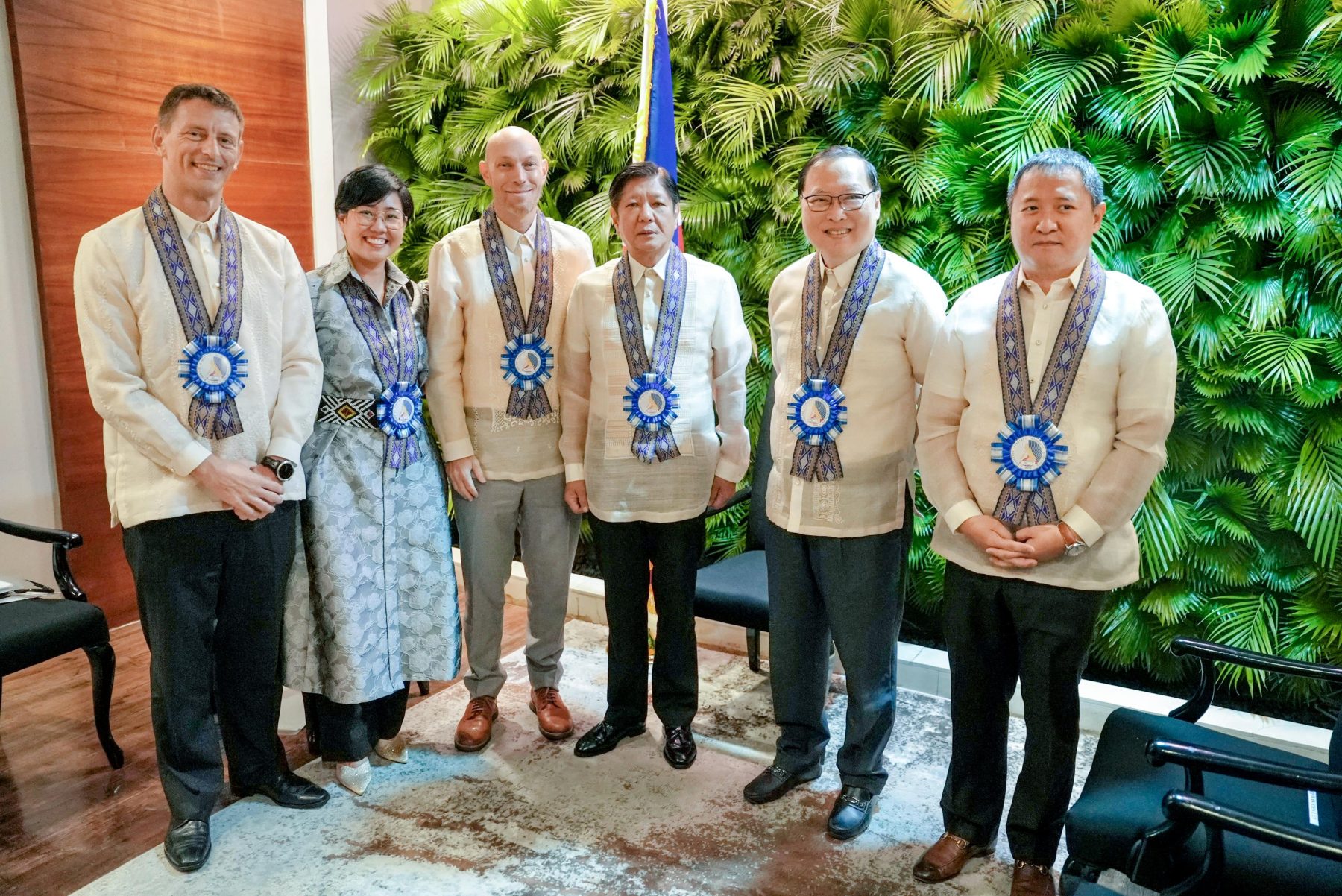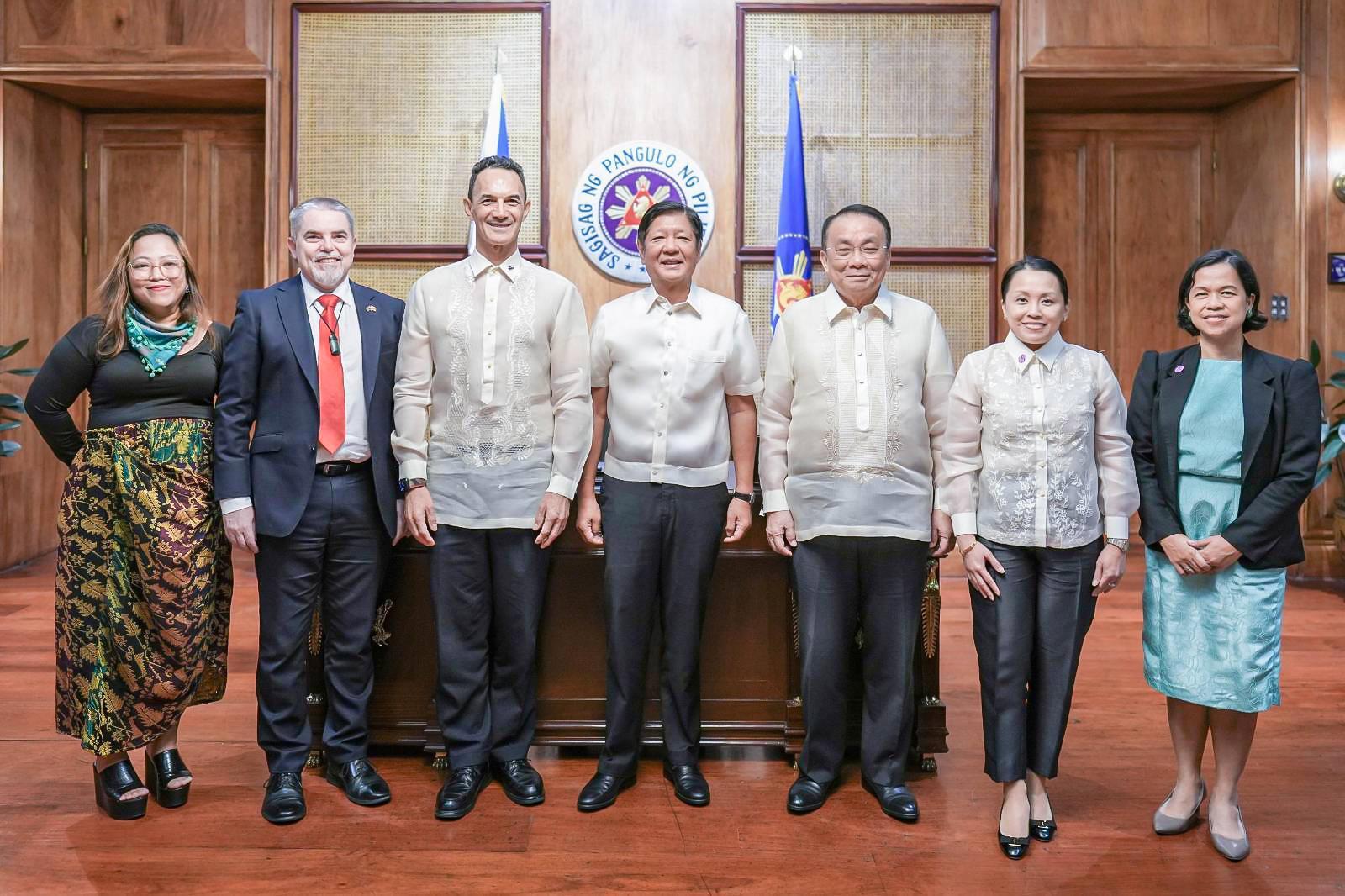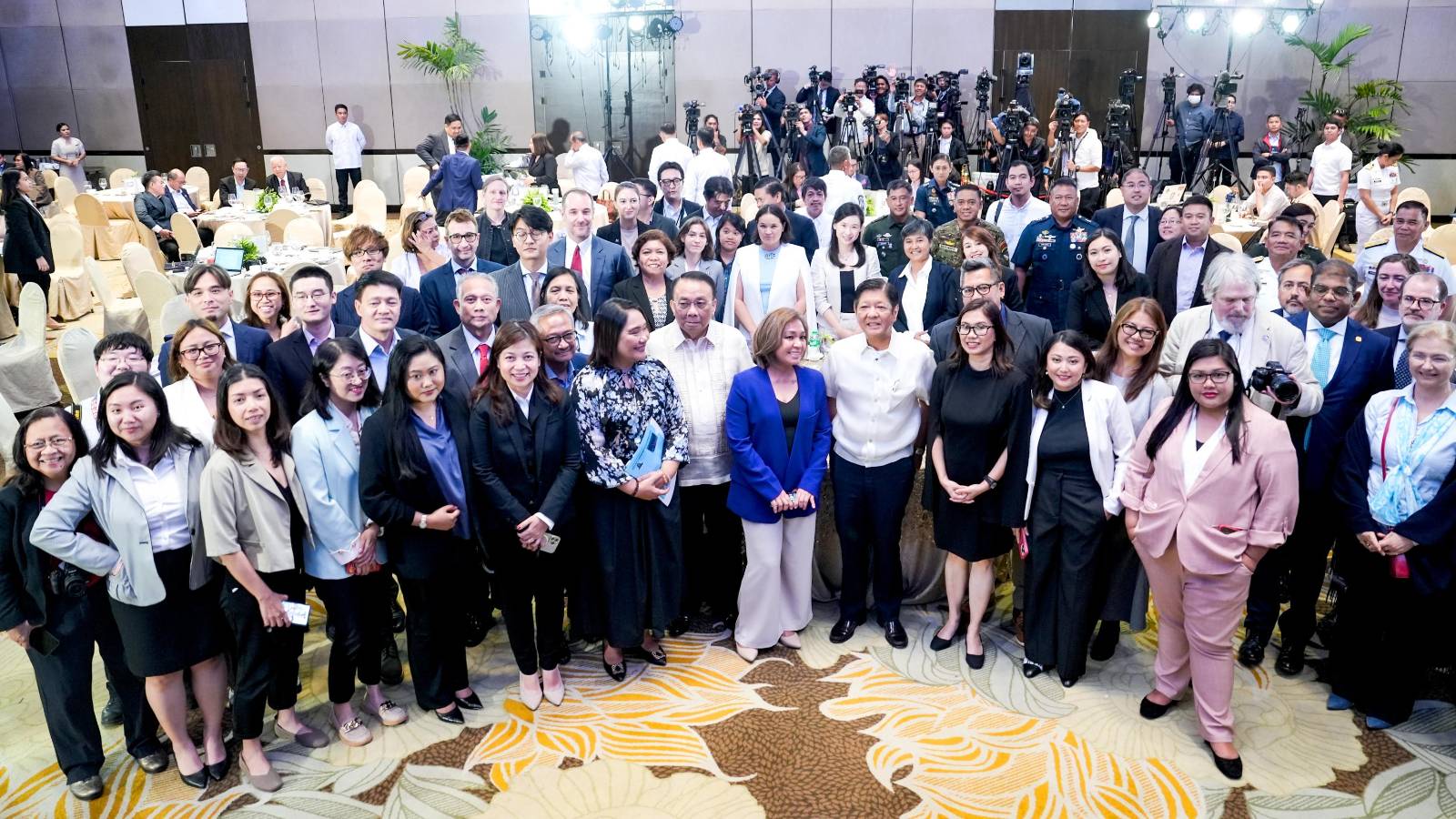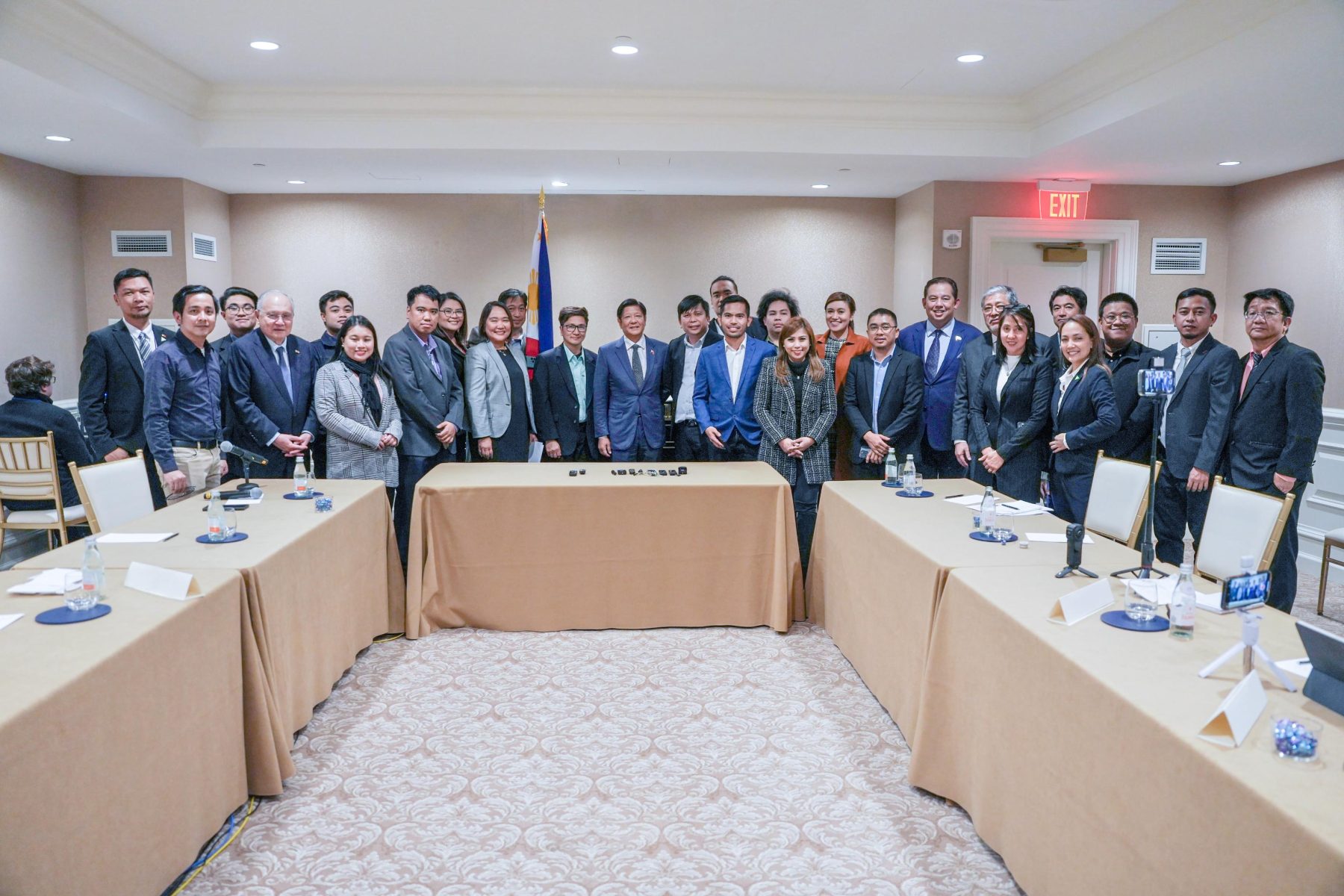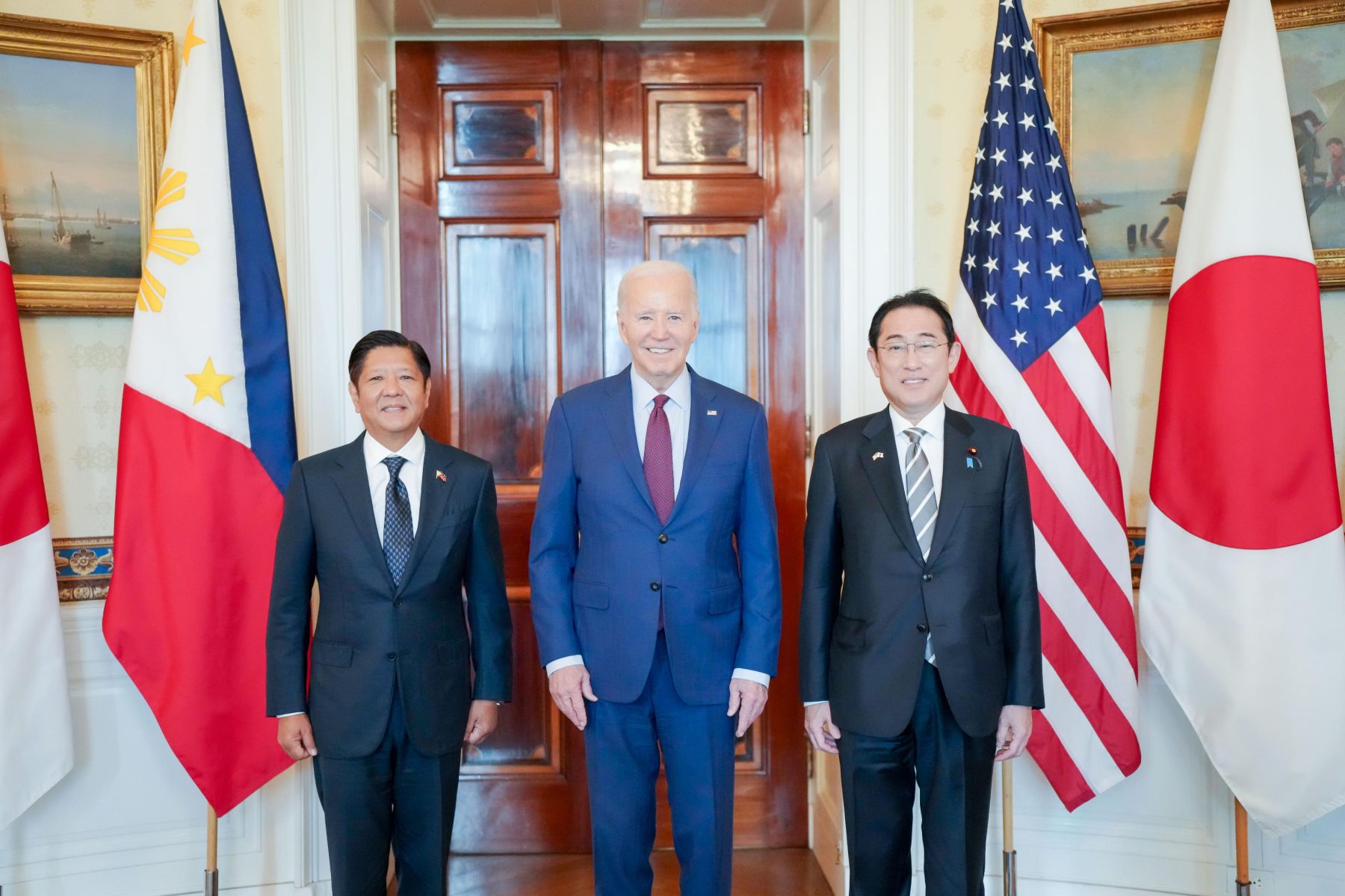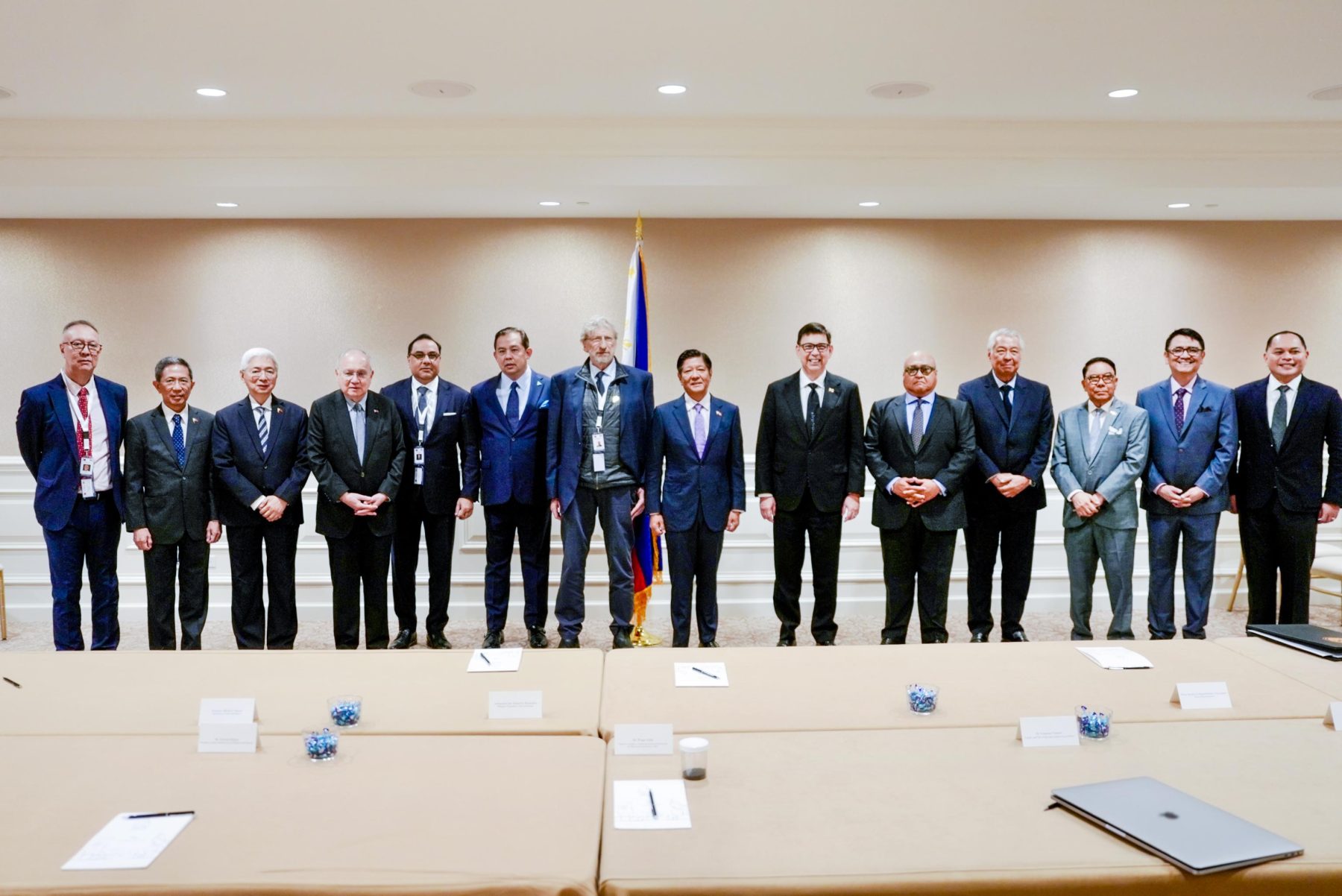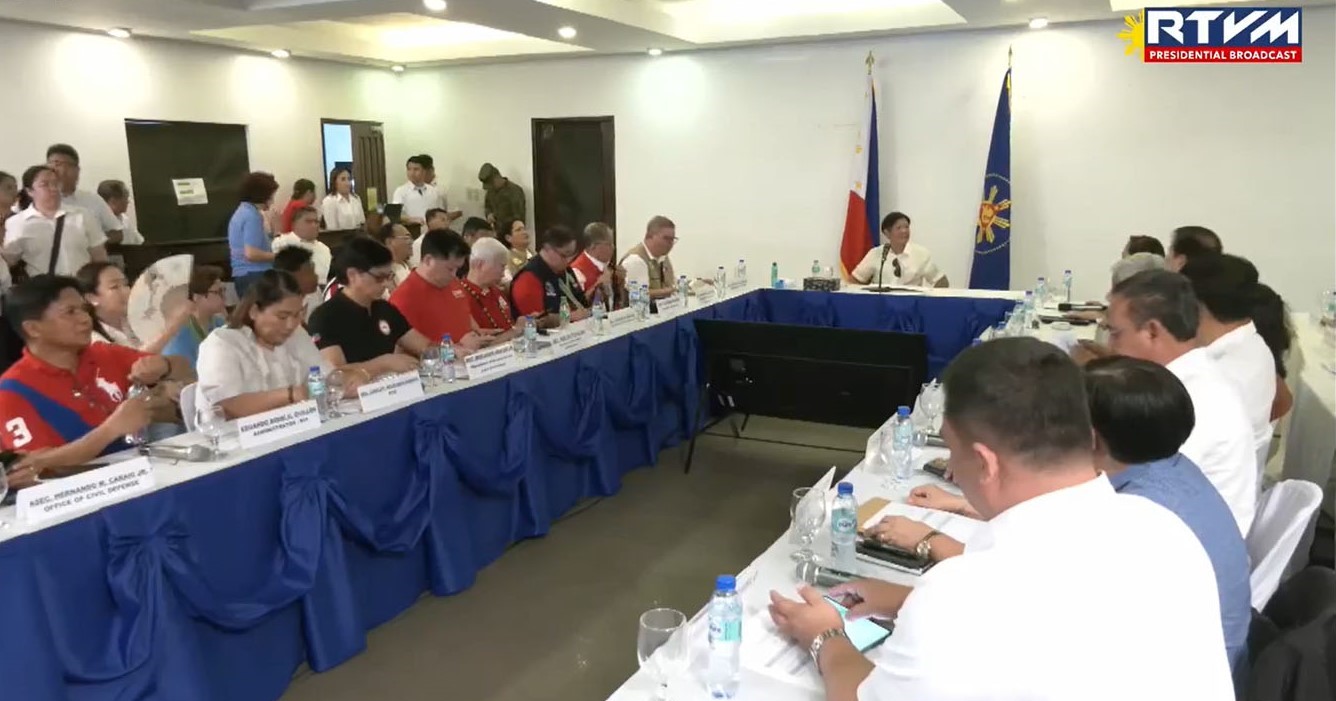March 18, 2016 – News Releases
 |
| 18 Mar 2016 |
|
|
|
| Public Works Department proposes P1-billion, 60-kilometer dike for Central Luzon |
| (CITY OF SAN FERNANDO, Pampanga) The Department of Public Works and Highways (DPWH) has completed a flood control master plan for Central Luzon that will permanently address perennial flooding in the region.
In a briefing with President Benigno S. Aquino III and Pampanga officials on Thursday, Public Works and Highways Secretary Rogelio Singson said the master plan will cover four provinces in Central Luzon — Nueva Ecija, Pampanga, and portions of Bulacan and Tarlac. It covers 83 municipalities with a population of 3.5 million people. Under the Pampanga River Basin Flood Control Master Plan, the DPWH proposed the creation of a huge retarding basin so that floodwaters during the rainy season would be contained in one area, instead of wreaking havoc in large portions of Central Luzon, especially Pampanga. The master plan proposed by the DPWH is the biggest among three major projects being spearheaded by the department. Secretary Singson said the catchment area would measure 10,434 square kilometers. He said the DPWH has completed the master plan and the government will proceed with public consultation, especially with communities that will be affected by the project, as the department expects to hurdle such issues as right of way. The plan pushes for the widening of the major rivers, especially the Pampanga River, and will include the excavation of major channels and the construction of river protection channels and tributaries. Singson said the DPWH is working on the detailed engineering of the retarding basin, which will be built on a natural swamp. It will require the construction of a P1-billion 60-kilometer dike with a height of 5 meters to 6 meters, he said. Affected communities have to sacrifice portions of their areas so that floodwaters would no longer affect large swathes of Central Luzon during the rainy season, Singson said. The project is an 8- to 10-year program that will provide permanent solution to Central Luzon’s flooding problem, he added. The government has allocated P6 billion for flood control from 2011 to 2016, much higher than the P2.7 billion allotted during the same period in the previous administration, Singson reported. PND (as) |
|
|
| President Aquino discusses flood control projects with Pampanga officials |
| (CITY OF SAN FERNANDO, Pampanga) President Benigno S. Aquino III on Thursday met with local leaders of Pampanga to discuss the flooding situation in the province and determine how the government could address the problem.
Pampanga’s provincial government recently conducted a ‘flood summit’ to raise awareness among Kapampangans about the current flooding situation in the province. Extreme weather disturbances in recent years have left several Pampanga communities vulnerable to inundation and the provincial government has conducted a massive information drive to capacitate families living in harm’s way. Pampanga provincial officials reported that Typhoons Lando and Nona caused major flooding in the province, with Typhoon Lando dumping 1.3 billion cubic meters of water and Typhoon Nona producing 1.1 billion cubic meters of water. They said Typhoon Lando inundated 91 barangays and Typhoon Nona, 72 barangays. Previous typhoons have damaged flood mitigation infrastructure, particularly the Arnedo dike. The 36-kilometer (km) dike, which was built in 1940, is the first line of defense when the Pampanga River overflows. The Arnedo dike however was built with a 50-year lifespan. Another damaged anti-flood structure is the Masantol-Apalit-Arayat Setback Levee. Built in 1973, the 40-km structure is the second line of defense against floodwaters from the Pampanga River. Engineers have put the levee’s lifespan at 100 years if properly maintained. However, the presence of informal settlers along the Pampanga River has caused the rapid deterioration of the levee. The Unified Project Management Office-Flood Control Management Cluster reported that more than one million individuals are residing illegally along the Pampanga River Basin. So far, the provincial government has relocated 13 illegal informal settler families from Cupang Arayat, providing them P200,000 in financial assistance. Heavy siltation of the Pampanga River and tributaries connected to it also poses a major challenge to Pampanga officials in terms of flooding. Heavy siltation is present at the mouth of the river at Sasmuan, Masantol, and Macabebe, blocking the exit of floodwaters and causing flooding in low-lying communities. Officials have come up with solutions to address flooding in the province, among them desilting and dredging the Pampanga River, constructing dikes or retaining walls at the lower portions of Candaba, San Luis, San Simon and Apalit, and armoring dikes to strengthen flood mitigation structures. They also called for the relocation of informal settlers along the Pampanga River, the land banking of relocation sites, and the construction of evacuation centers to accommodate affected families. Further analysis on the proposed ring dike in the study conducted by the Department of Public Works and Highways was also raised to address the problem. PND (as) |
|
|
| Give Mother Earth a break, switch off power for one hour, says Climate Change Commission |
| Even Mother Earth needs some time off.Climate Change Commission Secretary Emmanuel de Guzman made the statement as he appealed to the country to observe on Saturday (March 19) between 8:30 pm and 9:30 pm the annual Earth Hour awareness campaign celebrated across the globe.
“Nature has been working hard for the benefit of mankind for hundreds of years now. If people need to rest after a week of working, isn’t it only just that we give Mother Earth a break from all carbon dioxide emissions and other human activities that cause global warming, for at least one hour?” Secretary de Guzman said on Friday. Since 2009, the Philippines has been actively participating in Earth Hour, which uses the simple action of turning off electricity for 60 minutes. The awareness campaign, initiated by the World Wildlife Fund, brings together the international community for the single biggest collective effort aimed at limiting global warming. “When we turn off the lights and participate in other activities to preserve our environment, we allow Mother Earth to breathe. She has taken in so much of the carbon dioxide emissions, the dirty air. We need to give Mother Earth a break even for an hour and as much as we can,” de Guzman said. Carbon dioxide emissions, which come from human activities such as burning of fossil fuels like coal, natural gas and oil for electricity and transportation, as well as deforestation, trigger global warming and lead to climate change. Climate change has fueled extreme weather events in the past years, posing a serious threat to food supply, water, health, livelihood and infrastructure worldwide. Various science-based studies have linked the emergence of new infectious diseases, destruction of the ecosystem, super typhoons, droughts, floods and mudslides, and the unusual rise in sea levels to climate change. The Philippines has topped the list of countries that had the most number of weather-related major occurrences due to climate change, with 328 events from 1994 to 2013. “Everybody must take part in activities such as the Earth Hour because the power to reduce our vulnerability to climate change is in our own hands. It is about time for us people to undo the harmful things we have done to our environment,” de Guzman said. “For a brief moment, we offer a sacrifice for Mother Earth who has been suffering because of our carbon footprint or human activities that emit carbon dioxide into the atmosphere, including extractive and exploitative activities with our natural resources. There is no individual act that is too small because if we do it together, collectively we can help bring about a better future for our children and our world,” he added. To sustain the campaign in bringing down carbon footprint around the world, a total of 196 countries, including the Philippines, have approved a new and legally binding climate change deal in France last December. Called the Paris Agreement, it prompts developed and developing countries to limit global temperature “well below 2 degrees Celsius above pre-industrial levels and pursue efforts to limit the temperature increase to 1.5 degrees Celsius above pre-industrial levels”. In the Philippines, the government plans to attain this through its Nationally Determined Contributions (NDC) Roadmap, which will then be integrated in various levels, such as the Philippine Development Plan, Philippine Energy Plan, Local Climate Change Action Plan and Comprehensive Development Plans. PND (ka) |
|
|
| Government has invested heavily in Pampanga’s infrastructure, social welfare, says President Aquino |
| (CITY OF SAN FERNANDO, Pampanga) The national government has poured a huge amount of money to improve Pampanga’s infrastructure, social welfare, health care and agriculture, President Benigno S. Aquino III said on Thursday.Under its Daang Matuwid advocacy, the administration has invested heavily in building roads, bridges, airport, and a flood control project, as well as in improving social services in the province, he said in his speech before Kapampangans here.
The government has allocated P16.94 billion for infrastructure development in Pampanga from 2011 to 2016, compared to the P9.4 billion the previous administration had spent from 2005 to 2010, the President said, noting that the amount had funded such projects as the Gapan-San Fernando-Olongapo Road Project Phase 2, Lazatin Flyover, San Fernando 1st Green Road, and the Aquino Bypass Road. Last September, he said, the government approved the construction of the Clark International Airport New Passenger Terminal Building Project that would increase the terminal’s passenger capacity from three million to six million per year. Once the project is completed, it will boost tourist arrival in the province, the President said, citing that Pampanga’s tourist arrivals doubled from 486,595 in 2012 to 992,145 in 2014. “Alam po ninyo, lalo na ‘yung dayuhang turista, pag dumating daw po ng Pilipinas, tinataya na bawat dayuhang turistang dumarating, isang trabaho ang nalilikha, kaya malaking bagay po ‘yung pagdaloy — dumoble ang turista natin sa Pampanga,” he explained. The Department of Transportation and Communications has also constructed a temporary passenger terminal building at the Clark International Airport that will serve as pre-departure area for domestic flights, apart from installing baggage screening equipment and passenger boarding bridges, he said. President Aquino further reported that the administration has allocated P6 billion from 2011 to 2016 for Pampanga’s flood control projects, among them the Pinatubo Hazard Urgent Mitigation Project Phase 3, the rehabilitation of the San-Fernando-Sto. Tomas-Minalin Tail Dike, and the Integrated Disaster Risk Reduction and Climate Change Adaptation Measures. The President said the government is already in the public consultation stage for the Pampanga River Basin Flood Control Master Plan, an ambitious flood control project that will cover the provinces of Pampanga, Bulacan, Nueva Ecija and Tarlac. The project proposes the creation of huge catchment basins in Nueva Ecija and Pampanga to control floodwaters, as well as the construction of a 60-kilometer dike to channel rainwater. “‘Yung catchment basin, kakausapin nating mga kababayan natin sa naturang lugar, kailangan ‘yung lupa ninyo, dyan iimbakin ‘yung tubig. Ang choice maimbak dyan sa lugar na ‘yan o pabayaan nating kumalat ‘yung tubig, kung saan pinakamababa at taon-taon nagbabago po ‘yan,” he said. The government is also active in developing Pampanga’s agriculture sector, having allotted P1.5 billion to construct farm-to-market roads and irrigation systems, President Aquino said. He noted that more than 5,600 Kapampangan farmers are benefiting from 144 new farm-to-market roads and more than 2,500 of them are benefiting from the 69 irrigation systems that have been completed. To extend better health care services to the people of Pampanga, the President said, the administration had released P572.9 million to build or repair health facilities in the province from 2010 to 2014. He added that 2.61 million Kapampangans are enjoying PhilHealth coverage in the entire province, and they are part of the 93 million Filipinos benefitting from PhilHealth services. The Chief Executive moreover said that in 2013, he signed Republic Act 10355 to improve the Jose B. Lingad Memorial Regional Hospital. The implementation of the law, he said, increased the hospital’s bed capacity from 250 to 500 hospital beds. “Nakapaglaan na rin tayo ng pondo para sa pagpapatayo ng dalawang bagong wards ng ospital — ang Obsetrics-Gynecology and Pediatric Ward na natapos na po nung Disyembre, at ang Medical Ward na target nating matapos naman ngayong taon,” he said. “‘Yan po sa pagtutulungan ng ating DOH (Department of Health) at saka ng provincial government at ng PhilHealth. Maraming salamat po sa inyong lahat.” The President also reported that the government has increased the coverage of the Pantawid Pamilyang Pilipino Program (4Ps) from 1,200 households in 2010 to 51,371 households at present. “Ayon po sa mga inisyal na pag-aaral tungkol sa Pantawid Pamilya, ang epekto po ay ganito: 7.7 milyong Pilipino na raw po ang naiangat lagpas nung poverty line,” he said. Meanwhile, to promote local businesses in Pampanga, the Department of Trade and Industry has established 36 Shared Service Facilities to assist the people in processing organic fertilizer, bamboo and water hyacinth, he said. Emphasizing that for these government projects to continue, President Aquino called on the Kapampangans to support the administration’s candidates during the elections in May. PND (as) |
|
|
| Palace welcomes results of latest poverty incidence report from Philippine Statistics Authority |
| Malacañang on Friday welcomed the results of the latest poverty incidence report from the Philippine Statistics Authority (PSA), which showed a record low of 26.3 percent for the first semester of 2015.Presidential Spokesperson Edwin Lacierda said in a statement that poverty eased from 27.9 percent of individuals in the first semester of 2012 to 26.3 percent in the comparable period of 2015, a record low since 2009.
Secretary Lacierda said the PSA report also stated that extreme poverty—as measured by the proportion of the population unable to meet their basic food requirements—dropped for the first time below double-digit rates to 9.2 percent of families. “This latest announcement comes on the heels of another positive report from the PSA. Released just last week, the most recent round of the Labor Force Survey indicates that our unemployment rate dropped further from 6.6 percent to 5.8 percent between January 2015 and 2016. This is the lowest rate recorded for all such surveys conducted in January over the past ten years. Led by the services and industry sectors, total employment grew by 2 percent year-on-year, reaching 39.2 million with an estimated 752,000 additional workers,” he added. The Palace official attributed the PSA reports to good governance. “Seen within the context of a momentum that began in 2010, these developments stand as further testaments to the positive impact of good governance. Under Daang Matuwid, our people have gone from success to success, continuously reaping gains in various indicators of quality of life,” Lacierda said. “Since 2009, overall poverty in the country has decreased by 2.3 percent. Hunger incidence has similarly gone down. According to the Social Weather Stations’ Fourth Quarter 2015 Survey, the number of Filipino families experiencing hunger has fallen from 15.7 percent in September 2015 to 11.7 percent. In real numbers, this equates to an estimated 900,000 families no longer experiencing involuntary hunger. With this figure, the average hunger rate for 2015 stands at 13.4 percent—4.9 points below the 2014 average of 18.3 percent, and the lowest annual rate for the series in 11 years,” he further said. Lacierda said foremost among the government’s social intervention initiatives is the Pantawid Pamilyang Pilipino Program (4Ps), which has been credited for helping millions of the country’s chronic poor cross over the poverty threshold. “The challenge now is to further empower our people so that the transient poor—those who have crossed over to non-poor status yet remain vulnerable to economic shocks due to disaster and disease—will not again fall beneath the poverty line,” he explained. Lacierda noted that while encouraging, the latest poverty figures present a constant challenge for Daang Matuwid in further ramping up and scaling up efforts toward a future where no one is left behind. “Now that we have made significant headway and are on the cusp of even greater progress, we all the more need a steadfast hand to guide us toward this next level of Daang Matuwid. We trust that our voters will choose the best and most capable leaders for this task, and allow even more generations of our countrymen to achieve the Filipino dream,” he said. PND (jm) |
|
|
| President Aquino approves renaming of five schools |
| President Benigno S. Aquino III has approved the renaming of five schools, including three in the province of La Union.The President signed Republic Act No. 10751, which changed the name of Saverona Elementary School in Barangay Saverona, Talugtug municipality, Nueva Ecija province to Alberto G. Bautista Elementary School.
The Mahinog National High School in Barangay Hubangon, Mahinog municipality, Camiguin province was renamed Sixto A. Abao National High School by virtue of Republic Act No. 10750. President Aquino also approved the changing of the names of two elementary schools and one national high school in the municipality of Agoo in La Union. Republic Act No. 10749 renamed the Baybay Elementary School in Barangay San Manuel Sur to San Manuel Sur Elementary School. Republic Act No. 10748, on the other hand, changed the name of San Manuel Norte Elementary School to Dr. Manuel T. Cases Sr. Elementary School. The San Manuel Norte National High School was also renamed Dr. Manuel T. Cases Sr. National High School by virtue of Republic Act No. 10746. PND (jm) |
|
|





